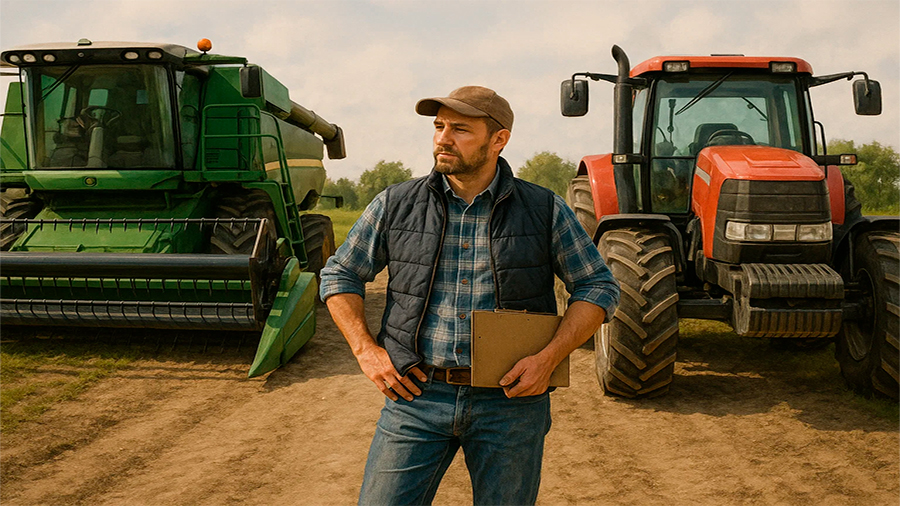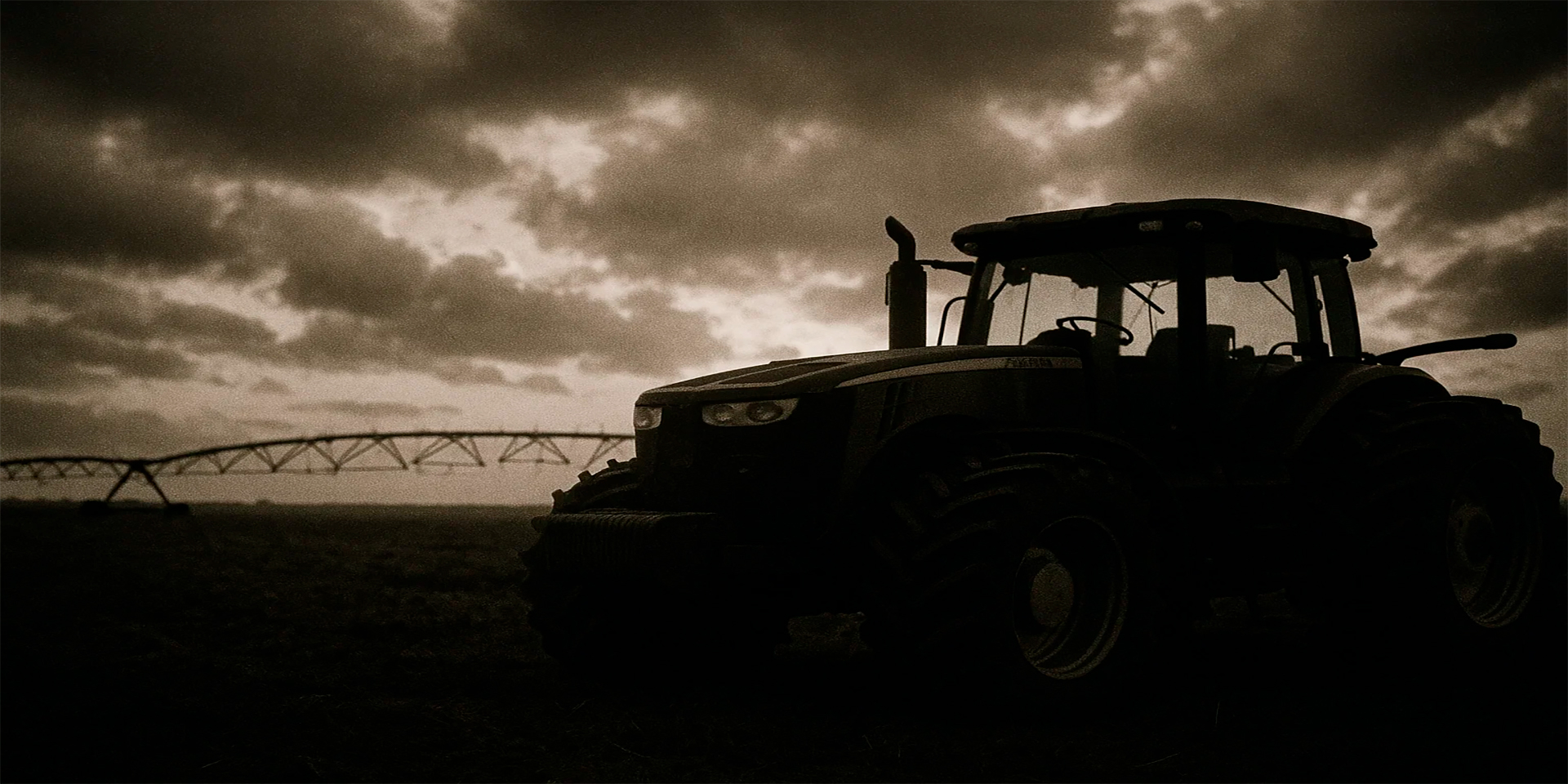Buying a new tractor or irrigation system can transform your farm’s productivity — but should you go into debt to make it happen? For many farmers, the answer isn’t easy. Agricultural equipment loans are tempting. They promise efficiency, more output, and modern tools to handle modern challenges. But rising interest rates, volatile weather, and unstable commodity prices make that decision a risky one if it’s not carefully planned.
The Need for Equipment Loans on Modern Farms
Running a farm without solid equipment today is like trying to compete in a race with flat tires. Machinery isn’t just about convenience — it’s about scale. One new baler can save you days of labor. GPS-equipped harvesters reduce fuel use and cut down on losses. Irrigation systems stretch limited water across more acres. The catch? These upgrades aren’t cheap. Even used equipment can cost tens of thousands. That’s where loans come in.
When Loans Make Sense
If your current machinery is breaking down, delaying harvests, or costing you more in maintenance than it’s worth, a loan may actually save you money long-term. The trick is knowing how to match the repayment schedule with your expected yields. If your harvest is steady, or you have strong contracts, that makes repayment more predictable. Loans are also helpful when scaling operations. If you’re expanding acreage or adding livestock, better equipment might be necessary — not optional.
The Risks Farmers Often Underestimate
Debt is a double-edged tool in agriculture. One bad season, and that shiny new sprayer becomes a monthly burden. A hailstorm, drought, or price drop can turn your financial plan upside down. Unlike urban businesses, farms can’t always pivot or cut costs overnight. Once you commit to loan payments, there’s little room to maneuver.
Interest Rates and Farm-Specific Pressures
Rising interest rates make new loans harder to justify. While banks used to offer low-rate options to farmers, that landscape is changing. If you sign on for a loan today, you may end up paying more in interest than you’d planned. That’s especially dangerous if your equipment doesn’t generate direct revenue. For example, a tractor might increase productivity, but it doesn’t write checks. You’ll still rely on markets and weather to generate the actual cash flow.

Leasing vs. Buying on Credit
Many farmers now face a choice: lease or borrow? Leasing lets you use new machinery with less upfront cost and no ownership commitment. It also reduces maintenance risk — most leases include service packages. But leasing has downsides too: no asset at the end, possible usage limits, and higher long-term cost. If you take out a loan and buy, the asset becomes yours. That’s equity — and it can be sold or refinanced later.
Watch for Balloon Payments
Some agricultural loans come with balloon payments — a large sum due at the end of the term. It keeps early payments low but can lead to financial shock down the line. Before signing any loan, know whether your repayment schedule fits your income cycle. Harvest-heavy farms need flexibility. Monthly payments during low-cash seasons can be a problem.
Planning Before Borrowing
Too many farmers jump at loan offers because they’re fast or because neighbors are upgrading. But financial discipline matters more than shiny tools. Before borrowing:
- Run yield projections for the next three years.
- Factor in worst-case scenarios — what if prices fall or rains fail?
- Talk to an agri-finance advisor, not just the dealership rep.
- Compare offers from multiple banks, including cooperatives or rural lenders.
Don’t Rely on Equipment Salespeople for Loan Advice
Sales reps want to close deals — not protect your balance sheet. If financing is offered at the point of sale, double-check the fine print. Sometimes rates look low up front but include hidden fees or inflexible terms.
Choosing the Right Lender
Not all lenders understand farming. Some focus on asset value, while others assess seasonal risk. Find one that aligns with your business model. Local agricultural credit unions or cooperative banks often provide better terms than national lenders. Ask about flexibility, grace periods, and refinancing options if a crop fails.
What to Ask Before Signing
- Is the loan fixed or variable rate?
- What are the penalties for early repayment?
- Is collateral required? If so, what kind?
- Can payments be adjusted to match seasonal cash flow?
Smart Insurance and Risk Planning
Borrowing for equipment without insurance is gambling. Insure your new asset immediately. Comprehensive coverage can protect you in case of damage or disaster. Also consider income protection or crop insurance — if drought hits, you still need to make payments. Some lenders may require this as part of the agreement.
Case Studies from the Field
Take José, a soybean farmer in southern Spain. He took out a €60,000 loan for a new combine and scheduled his payments after harvest seasons. He also insured the machine against fire and theft. His yields went up, and he cleared the loan early. Meanwhile, Amina in Kenya borrowed for drip irrigation. But a poor season and bad market timing forced her into default. Her takeaway? Never borrow without a backup plan or cash buffer.

What Smart Farmers Do Differently
Some of the most successful farmers treat equipment loans like investments — not quick fixes. They calculate return on investment per acre. They set aside part of each yield for debt repayment. And they diversify income streams to reduce risk. It’s not about saying “no” to loans — it’s about using them with eyes wide open.
Government and Co-op Assistance
In some regions, agricultural cooperatives or government programs offer subsidized loans. These are often safer, with lower rates or deferred payment schedules. But they come with eligibility requirements, paperwork, and timelines. If you qualify, they’re worth exploring before going straight to private lenders.
Emotional vs. Strategic Buying
Let’s be honest — there’s pride in owning a big machine. It feels like progress. But emotional borrowing rarely leads to smart decisions. Don’t upgrade because your neighbor just did. Upgrade because your spreadsheets say it makes sense. You don’t need the biggest combine on the road — you need equipment that matches your operation’s size and goals.
Debt Should Serve You — Not Own You
In agriculture, there’s already enough stress. Don’t let a rushed loan turn into a long-term regret. If your repayment plan doesn’t survive two bad seasons, it’s too fragile. Build buffers. Buy insurance. Keep some liquidity. Then, and only then, should you sign a loan agreement.
Final Thought: Tools Don’t Farm, People Do
New equipment can make your life easier, reduce labor, and boost yields. But it doesn’t replace good planning, smart decision-making, and adaptability. Loans can be a bridge to better operations — or a pitfall waiting to happen. The difference lies in how you prepare, how you borrow, and how honest you are about what your farm can really support.

